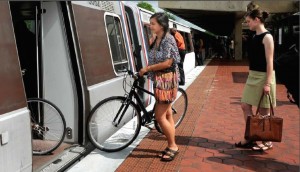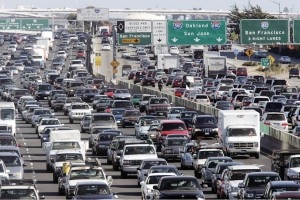
Workers who had previously taken public transportation are now shifting to driving themselves in large numbers.
The coronavirus pandemic has had a massive impact on life in America, with millions infected, more than 170,000 dead, and most Americans now taking steps to avoid becoming part of those statistics.
Since the first COVID-19 cases started showing up across the country late last winter, unemployment has reached near-Depression levels, with tens of millions more Americans ordered to work from home. Many are reporting back to their offices and job sites, but a new study reveals commuter life may have changed permanently. Among other things, more folks will continue working at home, at least part time. Others are giving up public transportation and switching to personal vehicles when commuting.
“As much of the American office workforce continues to work remotely, there is a major shift in commuting behavior, which is likely to have a lasting impact long after we return to the office,” said Matt Schmitz, assistant managing editor for Cars.com which conducted the survey.
(Auto buyers will soon have more brand choices than at any time since World War II.)
“And when they do finally return to the office, it won’t be via mass transit. Personal vehicles will dominate the work commute as distrust in public transport and ride-sharing continues.”
The long-term impact of the COVID-19 crisis may not be apparent for a year or more, according to many experts. For one thing, it is not clear how long the pandemic will hang on, nor whether vaccines and treatments will prove effective. If the situation were to be brought under control this year it could have a very different impact than if it dragged on for a year or more, as happened with the Spanish Flu a century ago.
Some employers have already announced what could be permanent changes. In May, Twitter CEO Jack Dorsey told employees they could work from home permanently. Since then, several surveys have found many employers, large and small, more willing to continue remote work policies, though it is unclear whether they will hold to that approach going forward.
Researchers have found mixed results in terms of both the effectiveness of having large numbers of employees operate remotely – and workers themselves have mixed reviews for that approach.
Many workplaces are trying to bring things back to something resembling normal, even if that means having only some workers report back, or having them continue to work remotely for part of the week.
(Looking for an inexpensive EV? Try buying Kandi.)
How those employees will commute marks some of the biggest changes likely to emerge from the pandemic, according to Cars.com:
- 62% of the 3,062 workers who responded to the survey plan to swap public transportation for their cars;
- 21% have purchased a car during the past six month, with 57% of them saying they did so specifically because of the pandemic;
- 59% are using ride-sharing less frequently than before;
- Such changes might not be permanent, however, 49% of the respondents saying it will take at least three months before they see mass transit returning to normal, pre-COVID levels.
Equally significant was the finding that more than a third, 35%, of those surveyed plan to commute less than before, suggesting their companies will be offering more flexible situations that could allow them to work at home either all or part of the time.
A casual search of social media reveals how Americans are adapting to the pandemic from a work situation. Digital meetings have become a routine part of life, though phrases like “Zoom fatigue” have also become part of the language for those where such meetings consume a major part of the work day. But there’s also a positive side to working from home.
Asked to how much time they’re saving by working at home, 40% of those who normally commute are saving 30 to 60 minutes a day, 26% saving more than an hour.
“Workers are saving up to an hour or more a day by not commuting, and finding significant value in this newfound gift of time,” said Cars editor Schmitz.
(Auto industry can expect digital sales trends to carry on.)
The study, conducted on Aug. 13-14, found 43% of would-be commuters have been watching more movies and TV during the pandemic, 38% exercising more, and 33% spending more time with family and friends. Less than one in five, about 19%, said they’re using time when they’d normally be commuting to work more.



